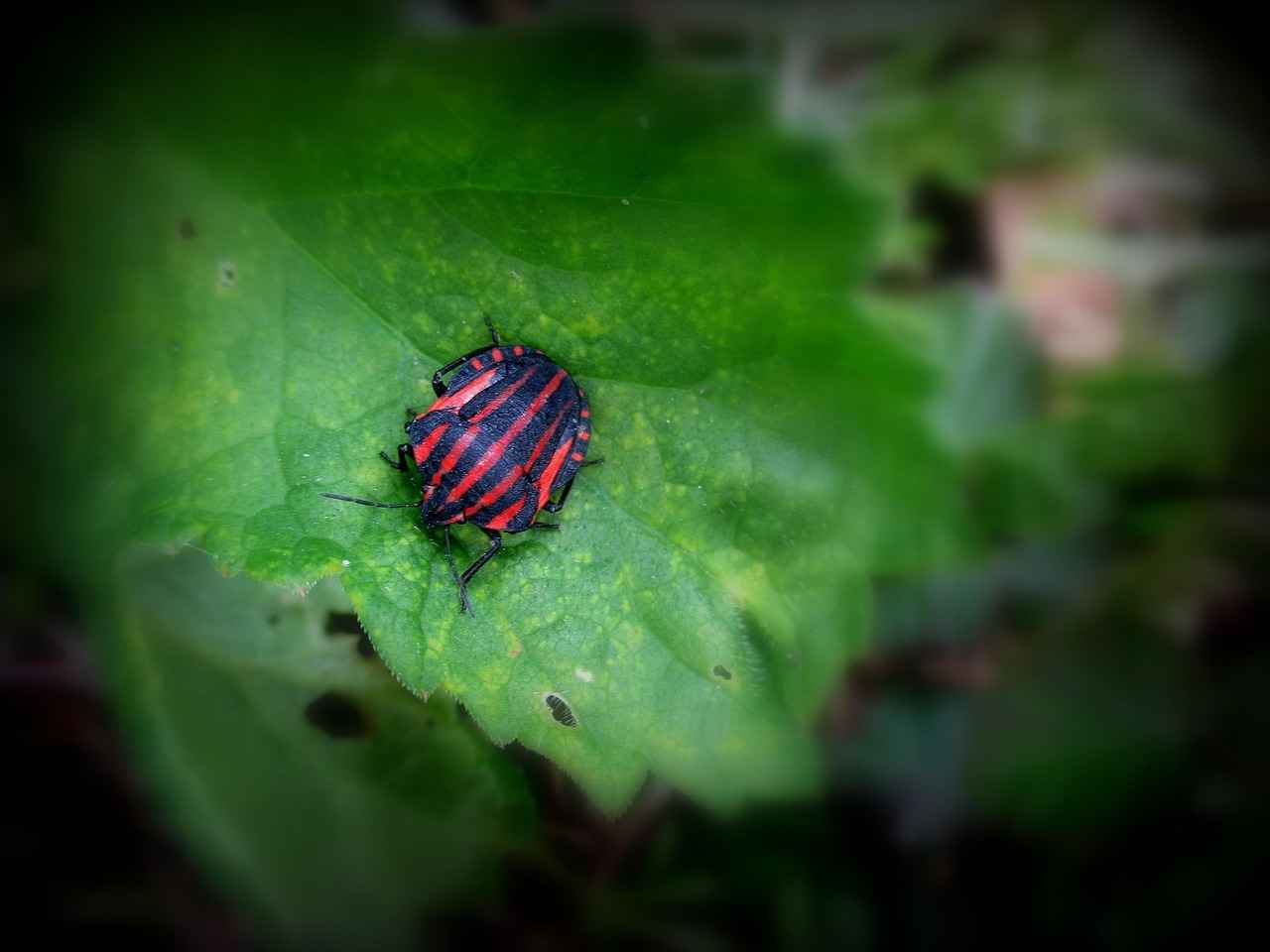This article delves into the captivating world of Larvesta, a unique Bug/Fire-type Pokémon. We will explore its evolution into the formidable Volcarona, discuss optimal moves that enhance its battle performance, and provide effective strategies to maximize your gameplay experience with this fascinating creature.
Understanding Larvesta’s Evolution
Larvesta evolves into Volcarona at level 59, making it essential for trainers to understand this evolution process. The transformation not only enhances its stats but also grants access to powerful moves that can turn the tide in battles. Trainers should focus on leveling up Larvesta efficiently to unlock its full potential.
Best Moves for Larvesta
Selecting the right moves for Larvesta is crucial for optimizing its battle capabilities. Here are some of the most effective movesets:
- Flame Charge: A Fire-type move that boosts Larvesta’s speed.
- Bug Buzz: A strong Bug-type attack with a chance to lower the opponent’s special defense.
- Solar Beam: A powerful Grass-type move that can deal significant damage when charged.
Effective Battle Strategies with Larvesta
To utilize Larvesta effectively in battles, consider the following strategies:
- Team Composition: Pair Larvesta with Pokémon that can cover its weaknesses, such as Water or Rock types.
- Countering Opponents: Familiarize yourself with Larvesta’s strengths against Grass, Ice, Bug, and Steel types while being cautious of its vulnerabilities to Flying, Rock, and Water types.
In conclusion, understanding Larvesta’s evolution, moves, and strategic battle techniques can significantly enhance your performance as a trainer. By leveraging its strengths and preparing for its weaknesses, you can maximize the potential of this intriguing Pokémon in your team.

Understanding Larvesta’s Evolution
Larvesta is a fascinating Pokémon that captures the interest of trainers with its unique traits and evolution potential. As a Bug/Fire-type Pokémon, it has the ability to evolve into Volcarona, a formidable creature known for its powerful offensive capabilities. Understanding the evolution process of Larvesta is essential for trainers who wish to maximize their battle effectiveness and explore the depths of this Pokémon’s potential.
Larvesta evolves into Volcarona when it reaches level 59. This evolution is significant because Volcarona not only boasts enhanced stats but also gains access to a wider array of powerful moves. To facilitate this evolution, trainers should focus on leveling up Larvesta through battles, experience points, and utilizing items such as Lucky Eggs to boost experience gain.
In addition to leveling up, it’s crucial for trainers to understand the importance of battle strategies that enhance Larvesta’s growth. Engaging in battles against Pokémon that provide high experience points can speed up the evolution process. Moreover, trainers should consider the type advantages of Larvesta, as exploiting weaknesses in opponents can lead to quicker victories and increased experience.
Choosing the right moves for Larvesta is essential for its performance in battles. Some of the most effective moves include:
- Flame Charge – A Fire-type move that boosts speed while dealing damage.
- Bug Buzz – A strong Bug-type attack that can lower the opponent’s Special Defense.
- U-turn – A strategic move that allows Larvesta to switch out after dealing damage.
Utilizing Larvesta in battles requires careful planning and a good understanding of its strengths and weaknesses. Trainers should aim to build a team that complements Larvesta’s abilities, focusing on Pokémon that can cover its weaknesses. Additionally, understanding the various types of opponents can help in formulating counter-strategies, ensuring that Larvesta remains a valuable asset in any battle scenario.
In conclusion, mastering Larvesta’s evolution and battle strategies can significantly enhance a trainer’s gameplay experience. By focusing on leveling up, selecting optimal moves, and employing effective strategies, trainers can unlock the full potential of this remarkable Pokémon.

Best Moves for Larvesta
Selecting the right moves for Larvesta is crucial for enhancing its effectiveness in battles. With its unique Bug/Fire typing, Larvesta has access to a variety of moves that can exploit opponents’ weaknesses. In this section, we will explore the most effective movesets, their advantages, and how they can be strategically employed against various opponents.
Recommended Attacks
- Flame Charge – This Fire-type move not only deals damage but also increases Larvesta’s speed, allowing it to outspeed opponents in subsequent turns.
- Bug Buzz – A powerful Bug-type attack that can lower the Special Defense of the opponent, making it easier for Larvesta to deal damage over time.
- U-turn – This move allows Larvesta to deal damage while switching out, providing strategic flexibility and maintaining momentum in battles.
Fire-type Moves
Fire-type moves are essential for maximizing Larvesta’s potential. They are particularly effective against Steel, Bug, Ice, and Grass types. Here are some top Fire-type moves:
- Fire Spin – Traps opponents and deals continuous damage, making it a great choice for wearing down foes.
- Inferno – A high-damage move with a chance to burn, adding a status effect that can further hinder the opponent’s performance.
Bug-type Moves
Bug-type moves complement Larvesta’s strengths, especially against Psychic and Dark types. The following moves are particularly effective:
- Signal Beam – This move has a chance to confuse the opponent, providing an additional tactical advantage.
- Struggle Bug – A lower damage move that reduces the Special Attack of opponents, making it useful for weakening stronger foes.
In summary, choosing the right moves for Larvesta can significantly enhance its performance in battles. By focusing on a combination of Fire and Bug-type moves, trainers can exploit opponents’ weaknesses and maximize Larvesta’s impact in combat scenarios.
Recommended Attacks
Certain attacks stand out as particularly effective for Larvesta, enhancing its performance in battles. Understanding these moves can significantly influence your strategy and overall success in combat scenarios. Below, we will explore some of the top moves available to Larvesta, including their types and damage potential.
| Move Name | Type | Damage | Effect |
|---|---|---|---|
| Flame Charge | Fire | 50 | Increases speed after use. |
| Bug Buzz | Bug | 90 | May lower the target’s Special Defense. |
| Fire Spin | Fire | 35 | Traps the opponent for several turns. |
| Morning Sun | Normal | N/A | Restores 50% of maximum HP in sunlight. |
Among these moves, Flame Charge is particularly notable, as it not only deals damage but also boosts Larvesta’s speed, allowing it to outspeed opponents in subsequent turns. Bug Buzz offers substantial damage and the potential to weaken foes defensively, making it a powerful choice against Psychic and Dark-type Pokémon.
Additionally, Fire Spin is useful for trapping opponents, limiting their options and allowing Larvesta to chip away at their health over time. Lastly, Morning Sun provides excellent sustainability, especially in prolonged battles, letting Larvesta recover health while maintaining offensive pressure.
In conclusion, selecting the right moves for Larvesta can greatly enhance its effectiveness in battles. By utilizing a combination of these powerful attacks, trainers can maximize Larvesta’s potential and secure victories against a variety of opponents.
Fire-type Moves
Fire-type moves are essential for maximizing the potential of Larvesta, given its unique Fire typing. These moves not only take advantage of Larvesta’s inherent abilities but also provide strategic advantages in various battle scenarios. Below, we will explore some of the most effective Fire-type moves available to Larvesta, highlighting their strengths and situational uses.
- Flame Charge – This move not only deals damage but also boosts Larvesta’s Speed, allowing it to outpace opponents in subsequent turns.
- Fire Spin – A trapping move that deals damage over time while preventing the opponent from escaping, making it useful for wearing down stronger foes.
- Heat Wave – A powerful area-of-effect move that can hit multiple opponents in double battles, providing excellent coverage and damage potential.
- Overheat – Although it has a high base power, this move lowers Larvesta’s Special Attack after use, making it a high-risk, high-reward option.
Fire-type moves are particularly effective against Bug, Steel, Ice, and Grass types. They can exploit these weaknesses to deal significant damage, often turning the tide in battles. Additionally, Fire-type moves can inflict burn status, which reduces the opponent’s Attack and deals residual damage each turn.
Choosing the right Fire-type move depends on the battle context. For instance, using Flame Charge early on can give Larvesta a speed advantage, while Overheat can serve as a last-resort option against tough opponents. Understanding when and how to deploy these moves can greatly enhance Larvesta’s effectiveness in battle.
In conclusion, mastering Larvesta’s Fire-type moves is crucial for any trainer looking to leverage its strengths effectively. By employing the right strategies and move choices, you can maximize your success in battles.
Bug-type Moves
Bug-type moves play a pivotal role in enhancing Larvesta’s battle efficiency. These moves not only capitalize on its natural abilities but also provide strategic advantages against various opponents. In this section, we will explore the most effective Bug-type moves, their unique benefits, and how to employ them effectively in battles.
- Bug Buzz: This powerful move boasts a solid base power and has a chance to lower the opponent’s Special Defense, making it an excellent choice for both offense and utility.
- U-turn: A strategic move that allows Larvesta to deal damage while switching out, U-turn helps maintain momentum in battle and can surprise opponents.
- Signal Beam: With its unique ability to potentially confuse the target, Signal Beam adds an element of unpredictability to Larvesta’s moveset.
Utilizing these moves effectively requires understanding their advantages:
- Type Advantage: Bug-type moves are particularly effective against Psychic and Dark-type Pokémon, allowing Larvesta to exploit these weaknesses.
- Strategic Switching: Moves like U-turn enable trainers to pivot out of unfavorable matchups while still dealing damage, making it a versatile option.
- Special Defense Reduction: Moves like Bug Buzz that can lower Special Defense are crucial in wearing down opponents over time.
To maximize Larvesta’s potential, trainers should consider the context of each battle. Employing Bug-type moves strategically can turn the tide in combat, allowing Larvesta to shine as a formidable contender.
Defensive Moves
This article explores Larvesta, detailing its evolution, optimal moves, and effective battle strategies. Discover everything you need to know to maximize your gameplay with this fascinating Pokémon.
Larvesta evolves into Volcarona, a powerful Bug/Fire-type Pokémon. Understanding its evolution process and requirements is crucial for trainers aiming to enhance their battle capabilities.
Selecting the right moves for Larvesta can significantly impact its performance in battles. We will discuss the most effective movesets and their advantages against various opponents.
Certain attacks stand out as particularly effective for Larvesta. This section will highlight top moves, including their types and damage potential in combat scenarios.
Fire-type moves are vital for Larvesta, leveraging its Fire typing. We will delve into the best Fire-type moves, their strengths, and situational uses during battles.
Bug-type moves complement Larvesta’s abilities. Learn about the most effective Bug-type moves, their advantages, and how they can be strategically employed against opponents.
play a critical role in enhancing Larvesta’s survivability during battles. By incorporating moves that strengthen its defenses, trainers can significantly improve Larvesta’s ability to withstand powerful attacks from various opponents.
One of the key defensive moves available to Larvesta is Protect. This move allows it to shield itself from all effects of moves that target it during that turn, providing an invaluable opportunity to recover or strategize without taking damage.
Another noteworthy move is Defensive Curl, which increases Larvesta’s defense stat, making it more resilient against physical attacks. This can be particularly effective against opponents that rely heavily on physical damage.
Additionally, moves like Will-O-Wisp can be beneficial, as they inflict burn status on opponents, reducing their attack power while simultaneously dealing damage over time. This tactic not only protects Larvesta but also weakens its adversaries.
Incorporating these defensive strategies into your gameplay can create a robust Larvesta that can endure longer in battles, allowing for more opportunities to counterattack and support teammates effectively.
Utilizing Larvesta effectively in battles requires strategic planning. This section will cover various strategies to maximize its potential and ensure success in combat.
Building a team around Larvesta is essential for maximizing its impact. We will discuss ideal teammates and synergies that can enhance overall team performance.
Understanding Larvesta’s strengths and weaknesses against different opponents is crucial. Here, we will provide tips on how to counter various types effectively, ensuring a competitive edge in battles.

Effective Battle Strategies with Larvesta
Utilizing Larvesta effectively in battles requires a well-thought-out approach. This section will explore various strategies that can help trainers maximize Larvesta’s potential, ensuring success in combat scenarios.
1. Understanding Larvesta’s Role
Larvesta serves as a versatile Pokémon that can fit into various team compositions. Its unique Bug/Fire typing provides it with distinct advantages, but it also comes with certain vulnerabilities. Recognizing its role within your team can guide your battle strategies.
2. Team Composition
Building a balanced team around Larvesta is crucial. Pair it with Pokémon that can cover its weaknesses, such as Water and Rock types. Great teammates include:
- Gardevoir – Offers Psychic-type coverage and can handle Fighting types.
- Gyarados – Provides bulk and can counter Rock-type threats.
- Ferrothorn – Acts as a defensive wall against many types that threaten Larvesta.
3. Move Set Optimization
Choosing the right moves is essential for maximizing Larvesta’s effectiveness. Consider a balanced moveset that includes:
- Flame Charge – Increases speed while dealing damage.
- Bug Buzz – A strong STAB move that can lower opponents’ Special Defense.
- Protect – Allows Larvesta to shield itself from damage and scout opponent moves.
4. Countering Opponents
Understanding the strengths and weaknesses of Larvesta is vital. It excels against Grass, Bug, and Ice types, while being vulnerable to Rock, Water, and Flying types. Use this knowledge to predict and counter opponents’ moves effectively.
5. Utilizing Status Moves
Incorporating status moves can disrupt opponents and create openings for Larvesta. Moves like Will-O-Wisp can inflict burn, reducing physical damage from attackers, while Sleep Powder can incapacitate threats temporarily.
Conclusion
By employing these strategies, trainers can enhance their effectiveness with Larvesta in battles. With careful planning and execution, this Pokémon can shine on the battlefield, proving to be a valuable asset to any team.
Team Composition
Building a team around Larvesta is essential for maximizing its impact in battles. As a Bug/Fire-type Pokémon, Larvesta has unique strengths and weaknesses that can be enhanced through strategic team composition. In this section, we will explore ideal teammates and synergies that can significantly boost overall team performance.
When selecting teammates for Larvesta, it is important to consider Pokémon that can cover its weaknesses, particularly against Rock, Water, and Flying-type moves. Here are some ideal teammates:
- Gardevoir: A Psychic/Fairy-type, Gardevoir can effectively handle Fighting and Poison types that threaten Larvesta. Its high special attack can also deal with opponents that Larvesta struggles against.
- Swampert: As a Water/Ground-type, Swampert can absorb Rock and Electric-type moves, providing excellent synergy with Larvesta. It can also set up Stealth Rock to chip away at opponents, further supporting Larvesta’s offensive capabilities.
- Charizard: This Fire/Flying-type Pokémon can cover Larvesta’s weaknesses to Rock-types while also dealing heavy damage with its Fire-type moves. Additionally, Charizard can use Dragon Dance to boost its speed and attack, making it a formidable partner.
Furthermore, it’s crucial to consider Pokémon that can set up entry hazards or provide status effects. Pokémon like Ferrothorn can set up Spikes while also being resistant to many of Larvesta’s threats. This way, Larvesta can come in safely and unleash its powerful attacks.
In conclusion, assembling a well-rounded team around Larvesta not only enhances its effectiveness but also creates a balanced strategy that can adapt to various opponents. By incorporating Pokémon that can cover its weaknesses and provide additional support, trainers can maximize Larvesta’s potential on the battlefield.
Countering Opponents
Understanding how to effectively counter various opponents is essential for maximizing Larvesta’s potential in battles. This Pokémon, with its unique Bug/Fire typing, possesses distinct strengths and weaknesses that can be leveraged against different types of foes. Here, we will explore strategies to counter some of the most common types of opponents.
- Water-types: Larvesta is at a disadvantage against Water-type Pokémon due to its Fire typing. To counter these opponents, consider using Electric-type moves from teammates like Ampharos or Jolteon, which can exploit their weaknesses.
- Rock-types: With a double weakness to Rock-type moves, Larvesta should avoid direct confrontations. Instead, rely on fast Bug-type moves to take out Rock-types before they can strike back. Teammates with Fighting or Ground-type moves can also be effective.
- Ground-types: Ground-types pose a significant threat to Larvesta. Use Flying or Water-type Pokémon to counter them effectively. Moves like Surf or Hurricane can turn the tide in your favor.
- Grass-types: Larvesta has an advantage over Grass-types due to its Fire moves. Utilize this strength by employing powerful Fire-type attacks like Flamethrower to gain the upper hand.
- Psychic-types: While Larvesta can hold its own against Psychic-types, it is important to be cautious of their strong special attacks. Consider using Dark-type moves from allies to exploit their weaknesses effectively.
By understanding these dynamics, trainers can develop more effective strategies to counter opponents, ensuring that Larvesta remains a formidable contender in battles. Always keep team synergy in mind, as the right combination of Pokémon can significantly enhance your chances of victory.
